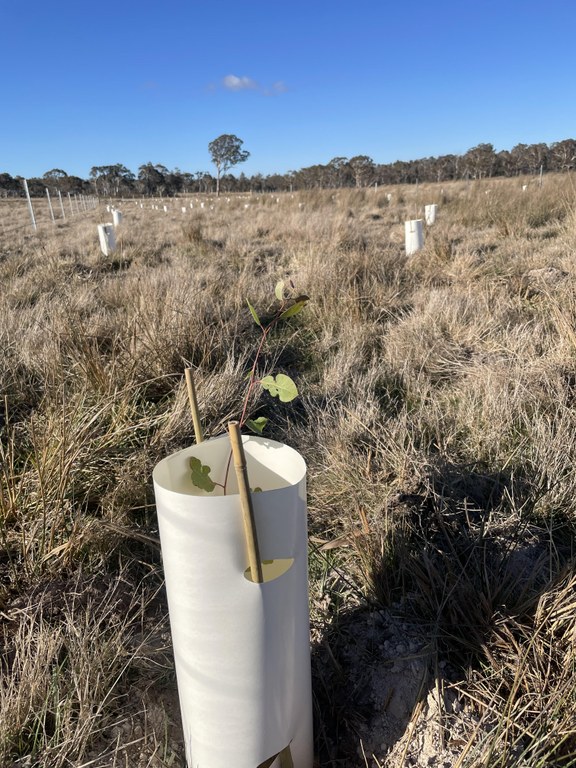
General Tips On Tree Guards
Here are some things we've learnt on tree guards from our tree plantings in the Upper Shoalhaven Landcare (USLC) district over the last few years. Everyone has their personal opinions on tree guards and there's no silver bullet unfortunately, as it's highly dependent on your local conditions and grazing pressure.
The two tree-guard suppliers for tree guards USLC have worked with recently are:
Better designs:
- Mallee Flute Tree Guard - very quick and easy to set up with only one hardwood stake required. Can last 4+ years in the field before it starts to deteriorate. These guards can also be recycled to other plantings after a few years.
- GreenGuard - the biodegradable equivalent of above. Would recommend a second stake (e.g. a bamboo stake going diagonally through the guard opposite a hardwood stake)
- Mallee Elemental - a new design which we haven't tested but it seems a compromise between the above two.
- Even Milk carton guards are a good, cheap, short term option (when properly staked to avoid them collapsing). They biodegrade quickly after about a year and, being short, let in plenty of light.
Guards which didn't perform so well:
- Any sort of biodegradable round guards like these Green-PODs - difficult to stake properly and are too solid or dark which doesn't let in enough light.
- Similar story with these white round cardboard guards - flimsy and need an extra stake to hold shape.
- Soft plastic guards like these Plastic Tree Guard Sleeves - require an extra stake and still blow away far too easily and become rubbish.
- These triangular corflute guards with the extra hinge joints are difficult to assemble and stake.
- Black Mesh guards let in a lot of light, but are more fiddly to cut and shape around stakes and tubestock.
General rules:
- Biodegradable guards you can set and forget to let them break down over time. With non-biodegrdable guards you'll need to consider removing, collecting and/or recycling guards once tubestock is established.
- Triangular guards are typically a stronger design. It's always a good idea to put the main stake in the direction of the prevailing wind.
- It's important to properly stake any biodegradable guards to avoid the guard collapsing in on itself when they get wet, or they can smother the plant. Allowing 2 stakes per biodegradable guard is ideal.
- Guards which maximise light available to the plant can help with growth. Block out or tall guards are only really suitable for tall tubestock. Aim for guards which are 450mm or 600mm tall for midstorey and canopy species.
-
If you're planting in an area with thick pasture growth or alternatively very dry and barren, investing in weed matting like these jute squares or similar to help suppress competition around the plant and/or provide insulation and increased water retention.
- Metal guards or wallaby guards are probably only required in areas of high grazing pressure (e.g. cattle, goats, deer, wallabies etc.). Sometimes the large mesh on these wire guards can let in rabbits. This means a second smaller guard like these
- Milk carton guards might be required to stop plants getting munched.
- In areas where wombats are active, it is almost pointless to guard tubestock. You're better off not planting around warren areas, or on active animal tracks.




